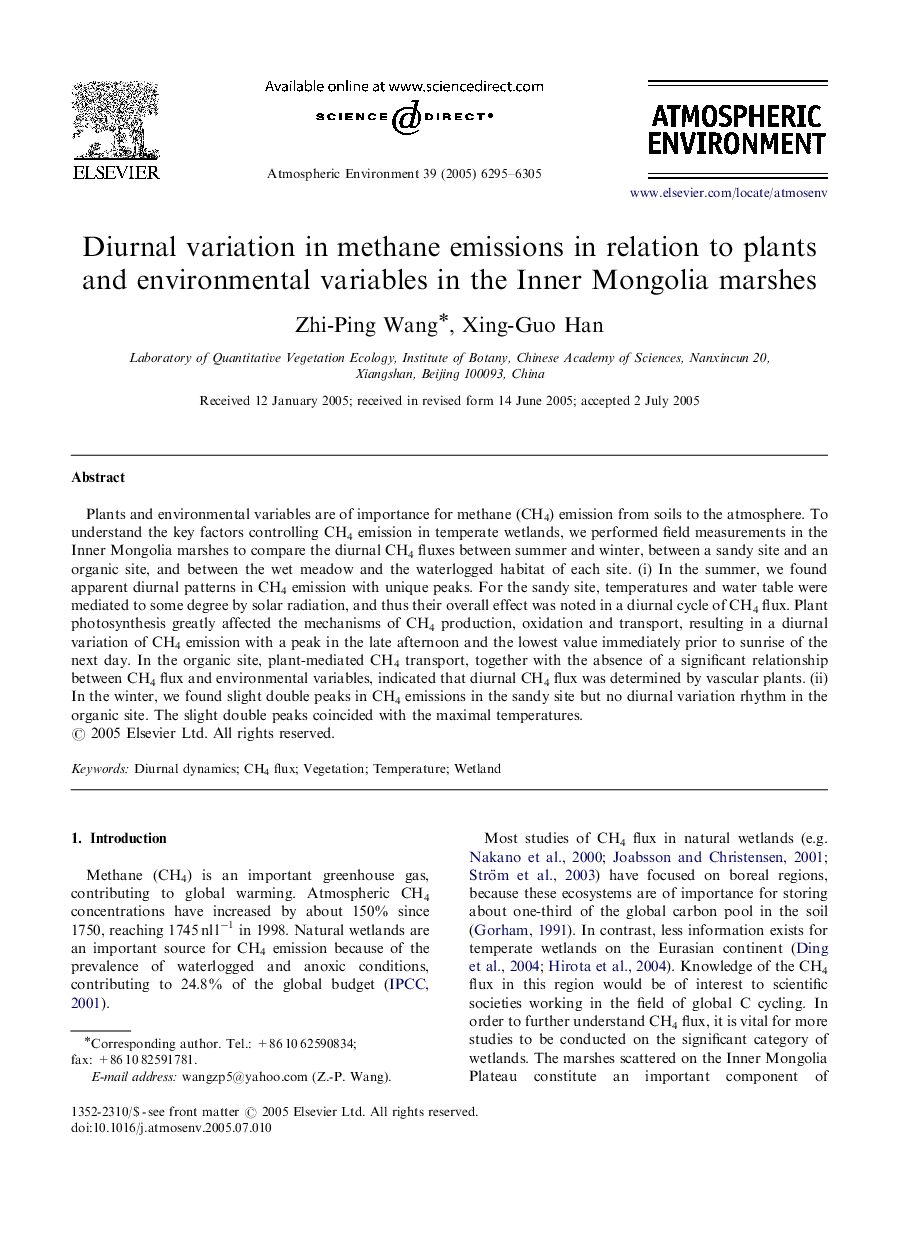| Article ID | Journal | Published Year | Pages | File Type |
|---|---|---|---|---|
| 4444041 | Atmospheric Environment | 2005 | 11 Pages |
Plants and environmental variables are of importance for methane (CH4) emission from soils to the atmosphere. To understand the key factors controlling CH4 emission in temperate wetlands, we performed field measurements in the Inner Mongolia marshes to compare the diurnal CH4 fluxes between summer and winter, between a sandy site and an organic site, and between the wet meadow and the waterlogged habitat of each site. (i) In the summer, we found apparent diurnal patterns in CH4 emission with unique peaks. For the sandy site, temperatures and water table were mediated to some degree by solar radiation, and thus their overall effect was noted in a diurnal cycle of CH4 flux. Plant photosynthesis greatly affected the mechanisms of CH4 production, oxidation and transport, resulting in a diurnal variation of CH4 emission with a peak in the late afternoon and the lowest value immediately prior to sunrise of the next day. In the organic site, plant-mediated CH4 transport, together with the absence of a significant relationship between CH4 flux and environmental variables, indicated that diurnal CH4 flux was determined by vascular plants. (ii) In the winter, we found slight double peaks in CH4 emissions in the sandy site but no diurnal variation rhythm in the organic site. The slight double peaks coincided with the maximal temperatures.
